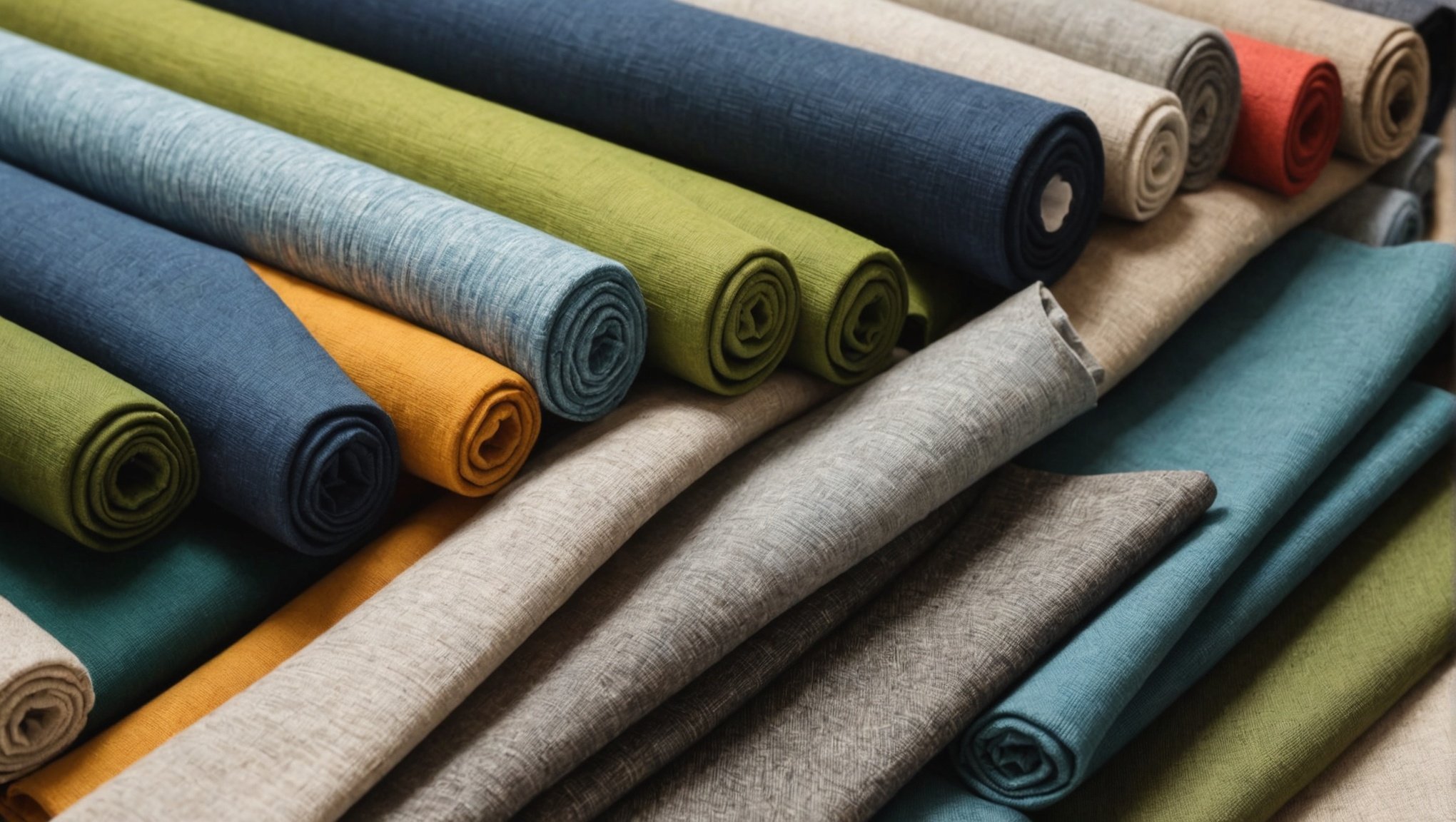In the world of fashion, a dynamic shift is happening. Consumers are becoming more aware of the environmental impact their choices can have, and they’re looking for ways to reduce their carbon footprint. One way to do this is through choosing clothing made from eco-friendly and sustainable fabrics. The fashion industry, often criticized for its environmental impact, is stepping up to meet these demands.
As consumers, you have a significant influence on the industry. With your buying power and your choices, you can push the industry towards a more sustainable future. This change, however, starts with knowing what materials are better for the planet. In this article, we will delve into what makes a fabric eco-friendly and shine a spotlight on the top sustainable fabrics you should consider for your wardrobe.
This might interest you : What’s the Trick to Wearing Pastels in Winter?
Understanding Eco-Friendly Fabrics
Before we explore the best materials, it’s important to understand what makes a fabric ‘eco-friendly’. A fabric can be considered eco-friendly if its production process follows certain standards. These include using less water and energy, reducing waste and pollution, and avoiding chemical pesticides and fertilizers.
Organic cotton, for example, is grown without harmful chemicals and uses less water than traditional cotton. It is also often hand-picked, ensuring the quality of the cotton fibers while keeping the environment healthy.
This might interest you : Can You Blend Scottish Tartan with Contemporary Office Attire?
In addition, a fabric’s sustainability doesn’t end with its production. It also includes its life cycle. How long will it last? Can it be easily recycled? How does it decompose? When considering a fabric’s environmental impact, these are all important questions to ask.
Organic Cotton: A Staple in Sustainable Fashion
Cotton is a favorite in the fashion world due to its versatility and comfort. However, traditional cotton farming practices are problematic due to their heavy use of water and pesticides. Organic cotton, on the other hand, is a more sustainable alternative.
Grown without the use of harmful pesticides and synthetic fertilizers, organic cotton is kinder to the environment. It also uses significantly less water to grow, making it a more water-friendly choice. Plus, it’s just as soft and durable as regular cotton, making it an easy swap in your wardrobe.
Wool: A Natural and Renewable Material
Wool is another material that ticks the box for sustainability. As wool comes from sheep, it is a natural, renewable resource. When managed responsibly, wool production can be beneficial for local ecosystems, as it can help maintain landscapes and biodiversity.
Wool is also highly durable, which means clothing made from wool can last for years, reducing the need for fast fashion purchases. Additionally, wool is biodegradable, meaning it will naturally decompose at the end of its life cycle, reducing landfill waste.
Recycled Fabrics: Turning Waste Into Wardrobe
Recycled fabrics are another brilliant way to make your wardrobe more eco-friendly. These materials are made by repurposing waste materials, like plastic bottles or old garments, into new, usable fabric. This process helps to reduce the amount of waste that ends up in landfills and oceans.
One example of a popular recycled material is rPET, which is made from recycled plastic bottles. It’s used to make everything from t-shirts to swimwear, and it’s incredibly durable. It’s a great way to bring the recycling process full circle, while still enjoying fashionable, functional clothing.
Hemp: The Eco Superstar
Hemp is a standout among sustainable fabrics. This hardy plant grows quickly, requires little water, and naturally resists pests, reducing the need for harmful pesticides. Additionally, every part of the hemp plant can be used, making it a zero-waste crop.
Clothing made from hemp is also incredibly durable, getting softer with each wash. Plus, hemp is naturally antimicrobial and UV resistant, making it perfect for all types of clothing. With all these benefits, it’s no wonder hemp is gaining popularity in the eco-fashion world.
In conclusion, as conscious consumers, the choice of materials you opt for in your clothing can make a significant difference to the environment. By choosing organic cotton, wool, recycled fabrics, or hemp, you’re not only investing in quality and durability, but also in a greener and healthier planet. With knowledge and intention, sustainable fashion can become the norm, not the exception. Knowledge is power, and now you have the power to make more informed choices about the clothes you wear.
Recycled Cotton: A Responsible Option for Conscious Consumers
The concept of recycled cotton is gaining traction in the sustainable fashion world. Recycled cotton, also known as regenerated cotton, is produced using post-industrial and post-consumer cotton waste. This waste is collected, sorted by color, and then processed to produce new yarn. The process presents a double win for the environment, reducing the amount of cotton waste that is sent to landfill and also reducing the need for new cotton production.
The production process of recycled cotton eliminates the use of new dyes, saving water and avoiding further pollution. The process also saves energy as the cotton does not need to be grown from scratch. It’s worth noting that as the fibers have already been spun and washed, recycled cotton often has a softer feel than its virgin counterpart.
Recycled cotton is used in a variety of clothing items, from t-shirts to jeans, and even home furnishings like rugs and bedding. Brands are increasingly using recycled cotton either on its own or blending it with other sustainable fibers like organic cotton or hemp to create high-quality, durable, and environmentally friendly products.
Recycled Polyester: A Solution for Plastic Waste
Another sustainable textile that is increasingly being used in the fashion industry is recycled polyester. Made from PET plastic bottles, recycled polyester is helping to tackle the global plastic waste crisis. The bottles are collected, cleaned, and crushed into flakes, which are then melted and spun into new polyester fibers.
Not only does this process keep plastic waste out of our oceans and landfills, but it also uses 59% less energy compared to the production of virgin polyester according to the Swiss Federal Office for the Environment. Like recycled cotton, recycled polyester can also be used in a variety of applications. It’s commonly used in sportswear due to its quick-drying properties, but it’s also found in everyday clothing items, as well as bedding and home furnishings.
Despite its benefits, it’s important to note that recycled polyester is not a perfect solution. It still sheds microplastics when washed, which can end up in our waterways. To mitigate this, you can use a microfiber catching laundry bag or filter.
In Conclusion: The Power of Conscious Consumption
In the vast world of fashion, every choice we make has an environmental impact. By choosing to wear clothes made from sustainable fabrics, we can significantly reduce our carbon footprint and push for positive change in the fashion industry. From organic cotton and wool to recycled cotton and polyester, there are plenty of eco-friendly options.
When it comes to sustainable textiles, labels such as ‘Organic’, ‘Recycled’ or ‘OEKO-TEX’ can help you make informed buying decisions. You can also choose to support brands that prioritize a closed-loop supply chain, where waste is minimized and resources are reused.
The textile industry has a long way to go, but with the growing demand for sustainable fashion, we are moving in the right direction. By choosing environmentally friendly fabrics, we are not just investing in our wardrobe, but also in the future of our planet. Let’s continue to use our power as consumers to shape a more sustainable and responsible fashion industry. Remember, every little bit counts.











